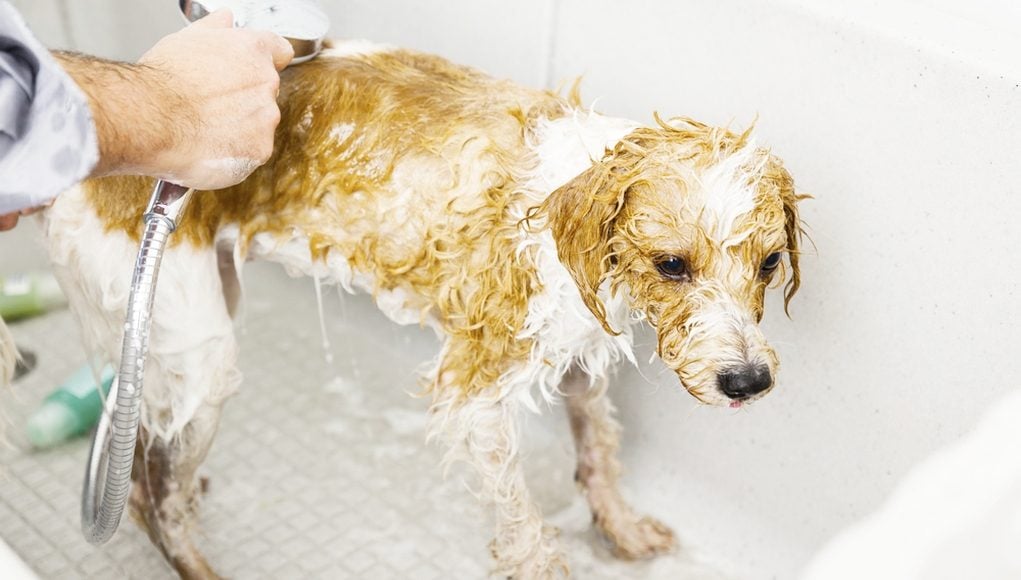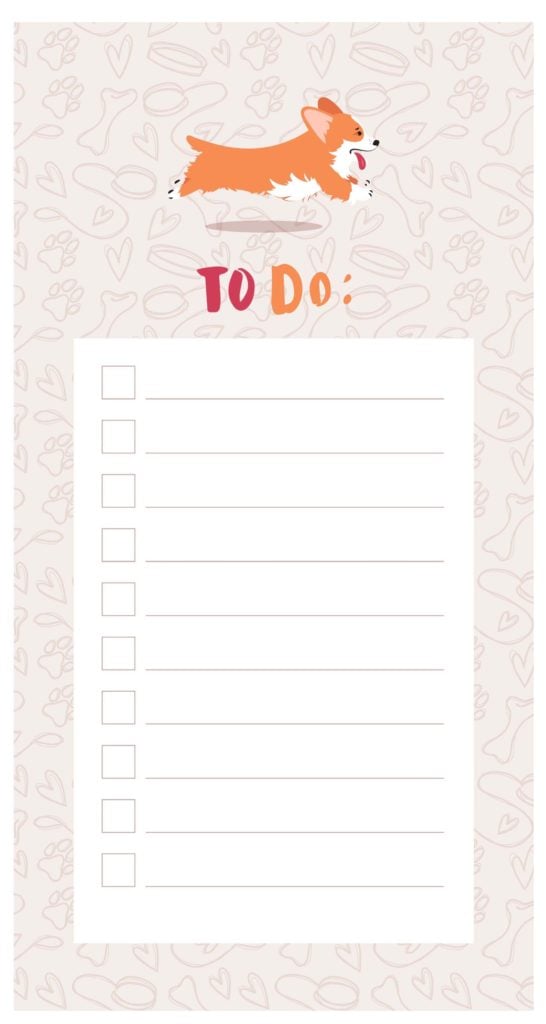A dog’s grooming needs vary based upon their breed, coat type, age and other variables. For example, a long-haired dog will require more regular grooming than a very short-haired dog. Regardless of how often your pet needs grooming, it is important to have a dog grooming schedule in place to maintain your pup’s overall health and wellness.
Table of Contents
In this article, we are going to take a look at various dog grooming tasks and how you can build a schedule based on your dog’s specific needs. The first step in creating a dog grooming schedule is assessing their grooming needs. These needs are not only determined by your dog’s breed, but also by their current health and skin condition.
The best way to decide on a good dog grooming schedule is to pay attention to your dog's current presentation: Does his coat look dull? Does his coat look oily? Is he shedding excessively? Is he itching? Has plaque built up on his teeth since the last tooth brushing? Are his nails too long? Do his ears smell a little “off”?
Taking note of these things will let you know that your current schedule isn’t quite cutting the mustard. Let’s take a look at some specifics so that you can get a better idea of what the best dog grooming schedule looks like.
Dog Grooming Schedule
1. Brushing Your Dog
Frequency: 1x a week
Brushing your dog is done for a number of reasons – to remove dirt and debris from the coat, to remove dead hair from the coat, to reduce shedding in the home (and your clothes) by removing loosened pet hair from the coat, and lastly for stimulating oil production to keep the dog's coat healthy.
Every dog should be brushed once a week to help to maintain coat health and appearance. Heavy shedders, longer haired dogs, working dogs, and dogs prone to matting of the coat should be brushed more frequently.
How can you tell if you need to brush your dog more frequently?
His coat will appear dull and may show patches of discoloration where dead hair is located. You may notice matted hair or debris or dirt buildup. Your dog's skin may be dry and itchy due to lack of oil gland stimulation or buildup of dead skin. Conversely, overbrushing can result in an excessively oily coat.
2. Brushing Your Dog’s Teeth
Frequency: 1x a day
In an ideal world, you should brush your dog’s teeth every day. This prevents plaque buildup which contributes to bad breath and poor health. At a minimum, you should be brushing your dog’s teeth three times a week and supplementing with dental toys and raw bones to prevent plaque buildup.
For more information on dog teeth brushing, you can read our extensive guide on the topic. It discusses the supplies you'll need and the best way to help your pet feel comfortable while having his teeth brushed.
3. Bathing Your Dog
Frequency: 1x every 3-6 months
Bathing is something that dog owners frequently do far too much. Veterinarians explain why bathing a dog should be done only on occasion and how frequent bathing is unhealthy for canines. Basically, dog's skin health is dependent upon a delicate balance of oil produced by the skin. Overbathing your dog can deplete these oils and cause him to feel itchy and uncomfortable.
Ideally, a dog should be bathed anywhere from once every 2-3 months to once or twice a year barring any incidents where he is exposed to odorous or hard to remove substances such as skunk smell. Keep in mind, however, that bathing and rinsing your dog off are two different things. You can rinse mud off your Fido without bathing him using shampoo.
When you do bathe your dog, use a canine friendly shampoo which will help to maintain a healthy balance of necessary oils on the skin. It's important that you don't ever use human shampoo on animals. It will strip the oils from your dog's coat and leave it dull and dry.
How can you tell if you are bathing your dog too often? You will notice that his skin becomes dry and itchy or too oily if you're bathing him too often. If you notice that it's more oily than normal, it is due to overproduction of oil as the skin tries to compensate for excessive dryness.
4. Cutting Your Dog’s Nails
Frequency: 1x every 3-8 weeks
Most dogs do not need their nails trimmed too often since regular walking on asphalt and similar hard surface helps to keep nails at a healthy length. On average, a dog will need his nails trimmed once every three to eight weeks. This number that varies as a result of your dog’s breed and activity.
One tip that many dog owners pay attention to is when they begin hearing a loud “tap, tap, tap” as their dog walks around the house. This is often an indication that the dog’s nails are too long, as most healthy dog’s nails will not touch the floor when standing still.
Cutting nails is a visual process and therefore is not something that is generally done too often. It is common, however, to cut a dog’s nails too short when trimming them. For this reason, it is important to trim nails slowly and to keep styptic powder on hand to control any bleeding when the nail quick is clipped.
5. Cleaning Your Dog’s Ears
Frequency: Inspect regularly, but clean only as needed
For most dogs, ear cleaning is not a necessary process. Dog ears have a way of maintaining health and introducing any foreign cleaners in to the ears can disturb this natural balance. For some dogs, though, particularly longer eared dogs or dogs prone to swimming, ear health is an important part of grooming.
The first step of maintaining healthy ears for these dogs is to always dry the ears thoroughly after exposure to moisture. For example, after a bath and after swimming, the dog should have his ears dried. In some instances, a drying powder for ears may also be necessary to ensure completely dry dog's ears.
The second step to stay on top of ear health is to clean the ears on a regular basis during more humid and hotter months. This will prevent bacteria and yeast from taking hold in moist ears.
The third and final step of maintaining ear health in your pet is by visually inspecting the ears as well as smelling them regularly for any ear infections. When the ears are darker pink, appear irritated, have discharge, smell musky, or look swollen, it is crucial to step in with a thorough cleaning. If there are signs of infection, it is also important to get to the vet right away since untreated ear infections can cause permanent hearing loss.
Is there a dog grooming schedule for ear cleaning? No. The best approach is to stay away from ears unless your dog has a history of ear infections. In the case of ears, drying is the best approach when needed and cleaning should be minimal based on external conditions.
6. Clipping Your Dog’s Coat
Frequency: 1x every 2-12 months (depending on breed)
Not every dog needs their coat clipped and just like people, those dogs that do need their coat clipped, need it clipped at different times depending on many factors. The best way to determine how often to get your dog’s coat clipped is by visually inspecting his hair/fur.
Pay attention to the following factors:
- Is your dog unable to see because his hair has grown over his eyes?
- Is he experiencing regular tangles in the coat due to length?
- Does his coat have mats or other unhealthy patches that need to be removed?
- Is his coat starting to look unhealthy and unkempt?
- Does your dog have problems with health or cleanliness because of his coat length?
Since most dog owners use professional groomers, it is quite easy to know when a dog should be groomed and when his coat is too short for grooming. If grooming at home, however, the signs listed above can be helpful in making a regular grooming schedule.
READ NEXT: How To Train A Dog To Enjoy Grooming & Stay Calm When Groomed














